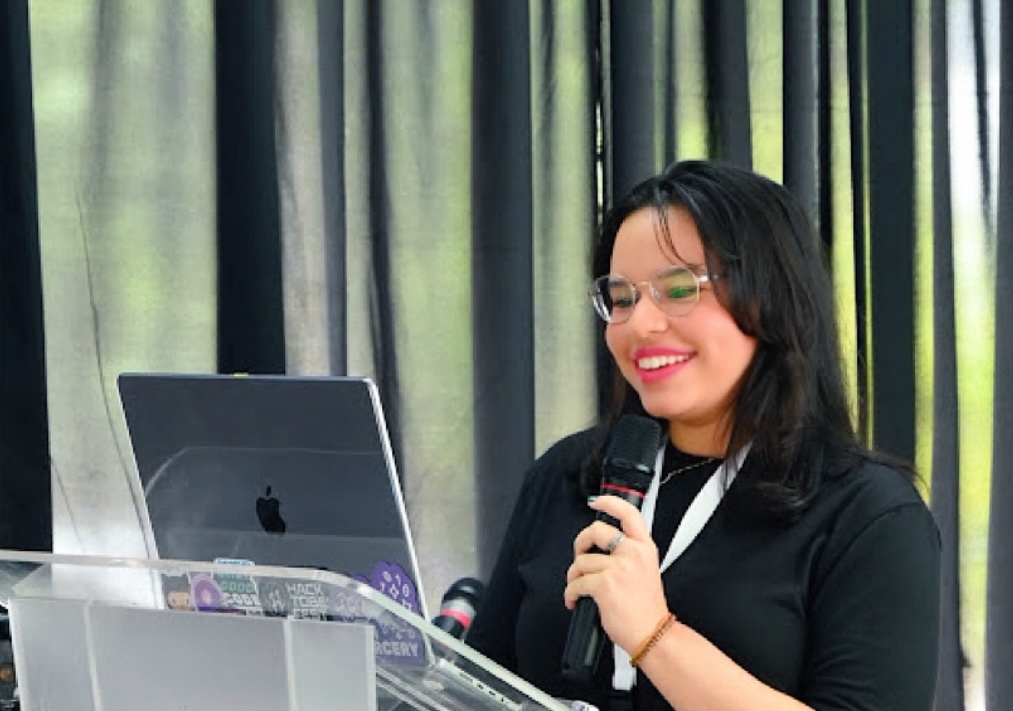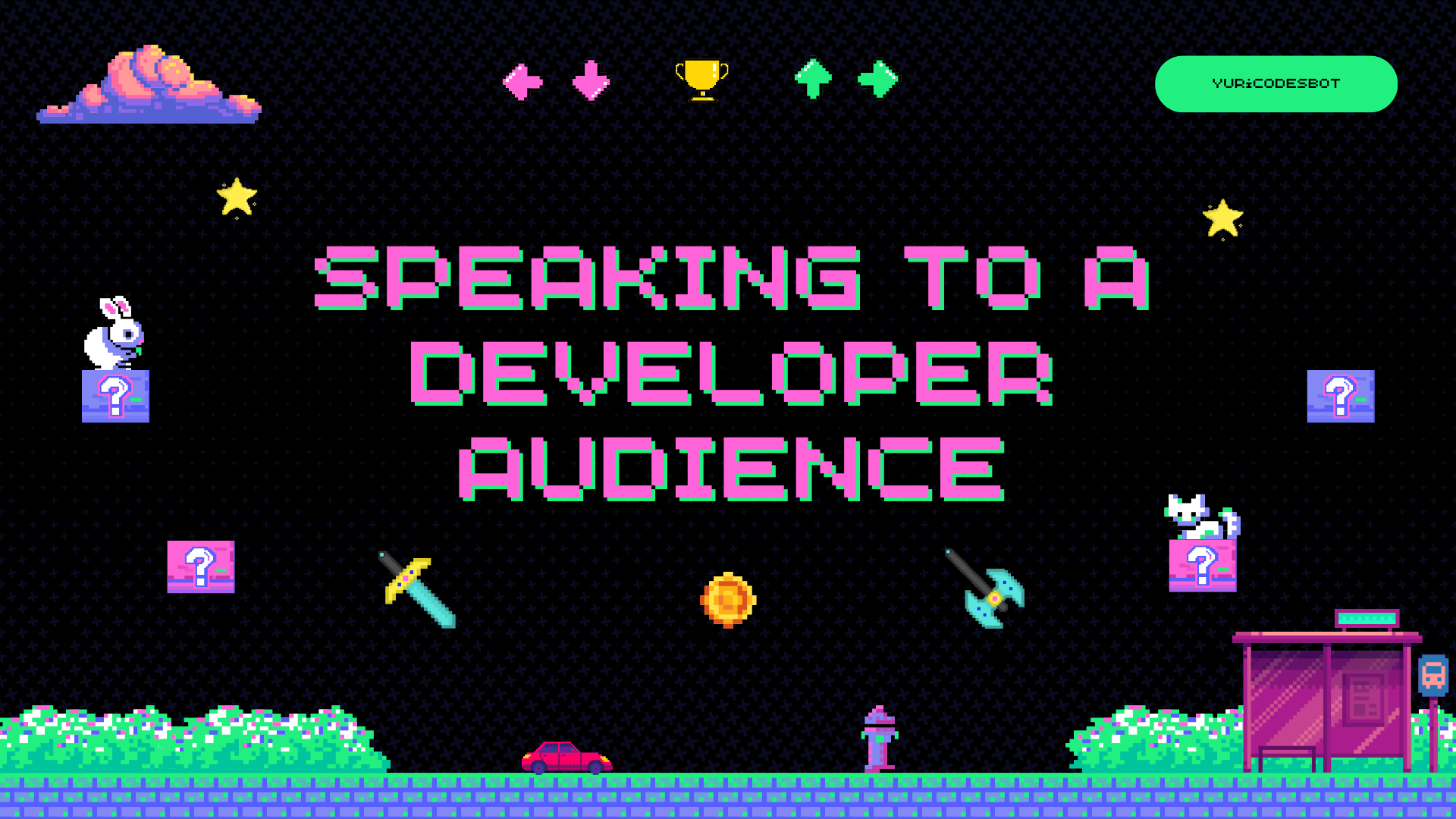Mastering Developer Presentations: Engaging Tips and Tricks for Speaking to a Developer Audience
 Yuri
YuriTable of contents

Developers are not your typical audience; they have a distinct preference for hard facts and the endless possibilities a product can offer. If you have an upcoming presentation or are curious about how to effectively deliver your speech to a group of developers, this article is for you.
How to keep them engaged
It's not about delivering your message it's about how you deliver it. I've been fortunate enough to give both in-person and online presentations (in Spanish and English) to developers of all experience levels. Here are some tips I've learned:
- Identify your audience
This will help you not only craft your talk but also limit the number of topics you'll introduce. You'll know which tone to use, whether professional, friendly, or a mix of both. You'll also understand if they are more focused on statistics or the possibilities of your product/topic. Start by considering the audience the event is catering to and what the speakers before you have done.
- Graphs and numbers but make them ✨fun✨
Numbers are exciting, trust me. It's all about the delivery that matters. For example, if you're discussing a tool and its performance improvements, you can start by asking yourself: How much does it actually improve? Which tasks does it affect? How does this relate to the next topic?
- Ask yes or no questions
By limiting the number of answers your audience can give, they're more likely to raise their hands and participate. One way to do this is to include it right before a new topic. For example, if I'm talking about accessibility, I'll ask a question about the number of accessible pages and have them raise their hands if they think that number has improved or declined over time.
- Keep it simple
As developers, we have a sense when someone is trying to sell us something; it's like a sixth sense. Remember, you're talking to individuals and trying to get your message across, so there's no need to overcomplicate your presentation. After identifying your audience, you should know which examples to use, how to connect with them, and the best way to convey your message. Try to connect instead of sell.
- Showcases or demos
If you're talking about a tool, present a demo or a screen recording of how it works, how it was created, or the inspiration behind it. What problem does it solve? Why is it important? Why should the audience care? This is the best way to get your message across to developers because they can see how the product or tool behaves in real life.
- Code examples
The best way to connect with developers is to speak their language: code. If your talk needs it, use code examples. Showcase the code in the best way possible using ray.so or any other tool that makes your code look good. Explain what it does and talk about why it's important.
What to include in your slides?
This is just a few pointers on some slides you can add to your presentation. At the end of the day, it's your presentation, so feel free to add or remove any category.
- Agenda
Have a quick agenda of the topics that you'll be covering on your talk. In a logical order. This will help the audience know what your talk is about even before you start it and how it'll benefit them.
- Introduction + your background
Take a moment to introduce yourself, explain your experience and background, and highlight why your topic is important. Feel free to include your contact information here.
- Abbreviations + definitions
A lot of tech is filled with abbreviations, so make sure to include their meanings in parentheses to make your talk accessible to everyone in the audience. Never assume everyone in the audience has the same level of knowledge as you.
- Code + Showcasing
Devs ❤️ Code. That's a fact. Make sure to add some code snippets here and there to illustrate your point or explain the functionality of a tool.
- Numbers
Clear numbers and graphs can enhance your talk and help the audience understand why it matters and what they can do with it. Always remember to cite your sources.
- Memes
After identifying your audience, if they require it, you can add some memes about your topic or general developer struggles. This can help them feel more comfortable and also "break the ice" at the beginning of the talk.
- Your contact information
Closing your talk, feel free to add contact links or, even better, a QR code with all the information needed to contact you. Let the audience know they can approach you with questions or suggestions and that you're open to helping them.
Lastly, be yourself and have fun. Developer conferences are a great way to connect with like-minded individuals and learn about other technologies. People are there to connect and learn from each other.
If you want more tips on content creation and communicating to developers, check out my talk on levering social media for devs.
This is the fourth article on my What even is a DevRel?!! series, so if you have any topics or specific questions you'd like me to cover make sure to leave them on the comments! I'll love to answer them in upcoming posts.
Thank you for reading. I hope you learned something new today!
☕If you enjoy my content Buy me a coffee It'll help me continue making quality blogs 💕
💙 Follow me on Twitter to know more about my DevRel adventures!
💜 Web Design for Beginners Series
🧡 JavaScript For Newbies Series
📹 Also subscribe to my Youtube Channel !
🖤And for more content and tips on TikTok !
Subscribe to my newsletter
Read articles from Yuri directly inside your inbox. Subscribe to the newsletter, and don't miss out.
Written by

Yuri
Yuri
I'm self/community-taught from Law to now Full-Stack Developer! Sharing my notes and knowledge hoping i help this lovely community. Learn with me! :)